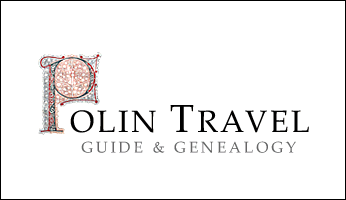On June 13th, 2013 the new exhibition in Auschwitz block 27 was inaugurated. The first exhibition in the so called ''Jewish pavilion or Jewish exhibition'' was opened in 1968, then it was refurbished and updated in 1978. The contemporary presentation titled Shoah is curated by Yad Vashem Institute and its director Avner Shalev in person. In his words the new exhibition shows 'Chapter by chapter, we show the most important topics related to the Holocaust, which is not necessarily a historical narrative, but rather a presentation of the very deep ethical and cultural dimensions of the memory of the Holocaust. To the visitor, this experience is to be a deep, meaningful and complete reflection on our fundamental morals as a people and members of today's global civilization.'
On the unveiling day the PM of Israel, Benjamin Netanyahu delivered a speech and officially inaugurated the exhibition. In his speech there was a personal accent 'I have just seen the children's drawings, flowers and gallows, and the drawing of a child who in a captivity draw a rabbit that runs around freely. I saw and touched the names of millions of Jews. Not all of them were sent here. One and a half million of them were murdered in the forests and the executions in the villages and in the pits. Among them was the twin sister of my blessed father-in-law Shmuel Ben Artzi. Hon Judith was beautiful and young. When she was murdered, she was about 20 years. I saw her name here. There are people who deny the Holocaust. Come to the block 27 and see the name after the name.'
The exhibition itself is taking two floors of block 27 in Auschwitz I. Although very modern display technology was used the whole project gives sense of simplicity and clarity. For the first time, in case of such presentations a large space is devoted to show Jewish life in Europe before the war. The films and pictures of Jewish life before 1939 are screened on walls around the visitor placing him into the middle of that rich civilization. This allows to gain the proper personal context and deepens the sense of loss caused by the genocide. Special value of those pre war images is realized in confrontation with the brutal reality of Auschwitz surrounding the building with exhibition. The narration doesn't limit itself to Auschwitz only but gives the general overview of Holocaust chronology including pre-war propaganda, ghettoization, execution sites and other death camps. Large part of the exhibition is devoted to children killed in the Holocaust and this topic is introduced and mediated by the simple drawings of children from Terezin covering the walls of one room. Every exhibit chapter is introduced with a short, basic description in English, Polish and Hebrew. The last room accommodates the pages with names of the Holocaust victims identified by Yad Vashem Institute through the testimonies of survivors, remaining documents and ongoing research. The building is also prepared for educational work with visiting groups offering special meeting places for ceremonies or reflection. There are some minor historical and language discrepancies, which surly will be corrected in the nearest future. The exhibition sets a new standard for Holocaust and genocide narration to the younger generations in the world especially in the times when the last survivors are slowly passing away. The Shoah in block 27 is highly recommended to every visitor of Auschwitz-Birkenau Museum who wants to understand more of the complexity of Holocaust and genocides.
You can find the pictures at PolinTravel.Guide.Genealogy.Poland
The New "Shoah" exhibition in block 27 in Auschwitz




